When selecting exercise mats for kids, match thickness to your child’s weight: choose 4mm for under 50 pounds, 6mm for 50-100 pounds, and 8mm+ for over 100 pounds. Always verify non-slip texture and safety compliance regardless of weight category. Consider activity intensity—lightweight mats (2-3 lbs) work for casual use, while heavier options (6-7 lbs) better suit gymnastics and high-impact exercises. These guidelines guarantee proper support while protecting your child from potential injuries.
Understanding Weight Capacity of Children’s Exercise Mats
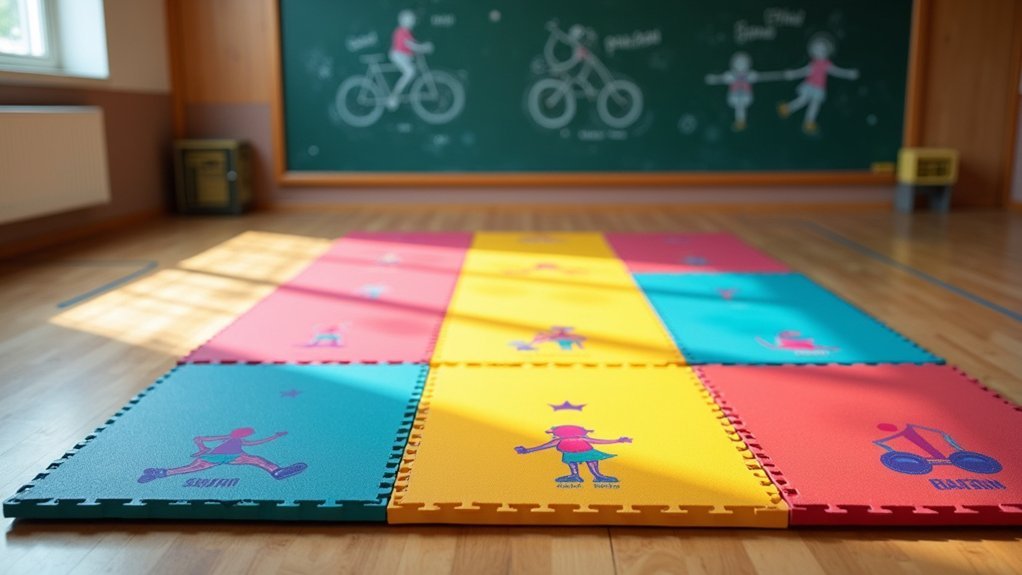
When selecting exercise mats for your children, understanding weight capacity is crucial for both safety and longevity. Most children’s mats, like Hello Fit Kids Yoga Mats, are designed to safely support the weight of active kids during various exercises.
The thickness of a mat directly affects its cushioning and support capabilities. Thicker mats (around 4mm) provide better protection and help prevent injuries during activities like yoga and gymnastics.
You’ll want to balance thickness with weight—lightweight mats (about 2 lbs.) are more portable, while heavier options (up to 7 lbs.) often offer more durability.
Always verify that your chosen mat meets safety standards and is free from harmful materials. A properly weight-rated, durable mat guarantees your child can exercise safely while developing healthy habits.
Matching Mat Thickness to Your Child’s Weight
Three key factors determine the ideal exercise mat for your child: their weight, activity type, and safety needs.
When selecting the proper mat thickness, follow these weight-based guidelines for best support:
For children under 50 pounds, a 4mm mat thickness provides sufficient cushioning for yoga and light exercises while maintaining stability.
Kids weighing 50-100 pounds need at least 6mm thickness for better shock absorption during more dynamic movements.
Children over 100 pounds require 8mm or thicker mats with a durable foam core to protect joints during high-impact activities.
Regardless of weight, always choose exercise mats with a non-slip texture to prevent accidents.
Monitor mat performance regularly—replace when cushioning deteriorates or grip diminishes.
Proper support guarantees both safety and comfort as your child grows and their activities intensify.
Durability Factors for Different Weight Ranges
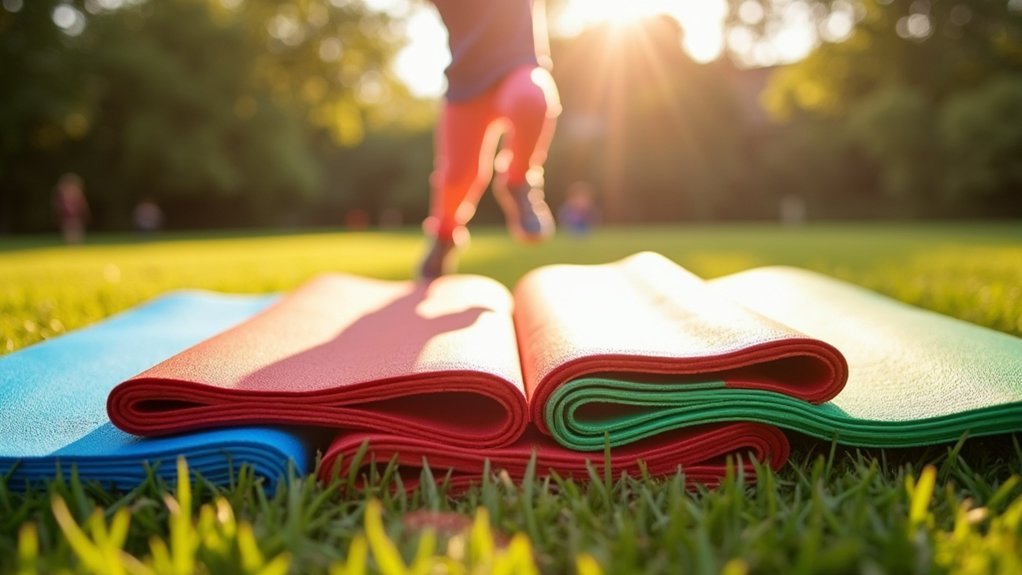
A mat’s long-term performance relates directly to how well it matches your child’s weight category. Heavier mats (6-7 lbs.) constructed from high-quality materials offer superior durability and impact absorption for children engaged in gymnastics or activities with frequent falls.
When your child exceeds 50 pounds, you’ll want these thicker mats to provide adequate cushioning and support.
Lighter mats (2-3 lbs.) sacrifice some durability for improved portability, making them suitable for younger, lighter children involved in casual exercise.
However, they won’t withstand intense daily use from heavier children.
To maximize both safety and longevity, select a mat weight proportional to your child’s activities—choosing portability for travel needs or everyday play, but investing in heavier, more durable options for regular gymnastics or higher-impact exercise.
Frequently Asked Questions
How to Choose Exercise Mat Thickness?
Choose an exercise mat thickness that fits your activity. You’ll want 4-6mm for general fitness, 2-3mm for stability-focused exercises, and 8mm+ for high-impact activities or joint protection. Consider your comfort needs too.
What Size Workout Mat Do I Need?
For your workout mat, you’ll need a size that fits your exercise space and activities. Consider your height and movements – a standard 68″ x 24″ works for most adults, but larger mats accommodate full-body exercises better.
How to Select an Exercise Mat?
When selecting an exercise mat, consider thickness for joint cushioning, choose non-slip surfaces for stability, and guarantee it’s made from safe materials. Look for easy-to-clean options that are lightweight enough for your portability needs.
What Size Gymnastics Mat Do I Need?
Choose a mat at least 4’×8′ for basic skills. For your level, select 2-4″ thick mats if you’re a beginner, or 6″+ if you’re advanced. Consider your available space and the specific skills you’ll practice.
In Summary
When choosing your child’s exercise mat, you’ll save money and prevent injuries by following these weight guidelines. Remember to check the manufacturer’s weight capacity, select appropriate thickness for your child’s size, and consider durability factors based on their weight range. These simple steps guarantee you’re investing in a mat that’ll grow with your child while providing the proper support for their developing body.
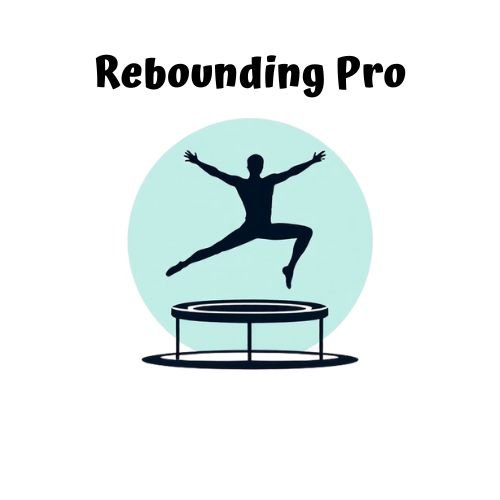
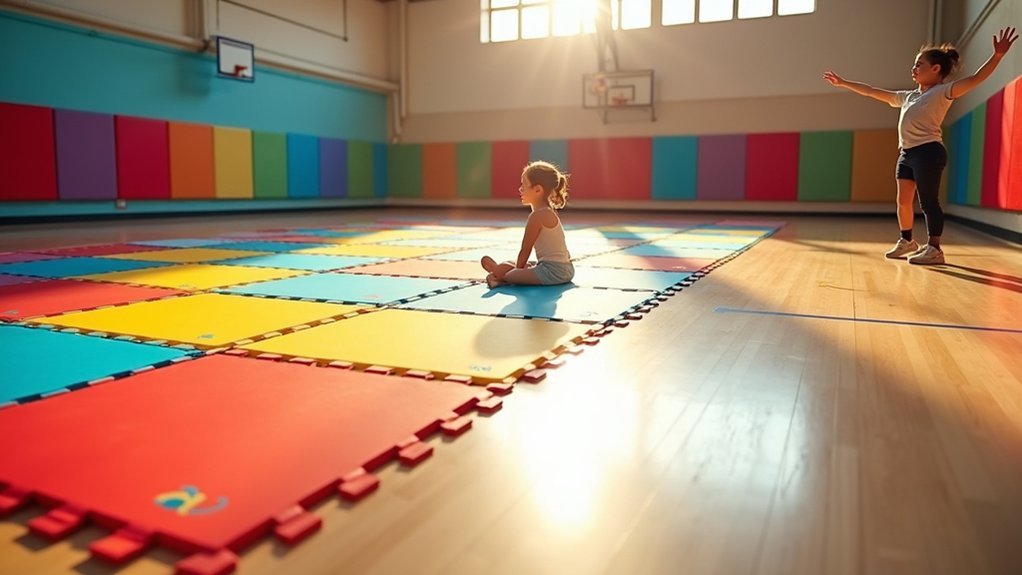

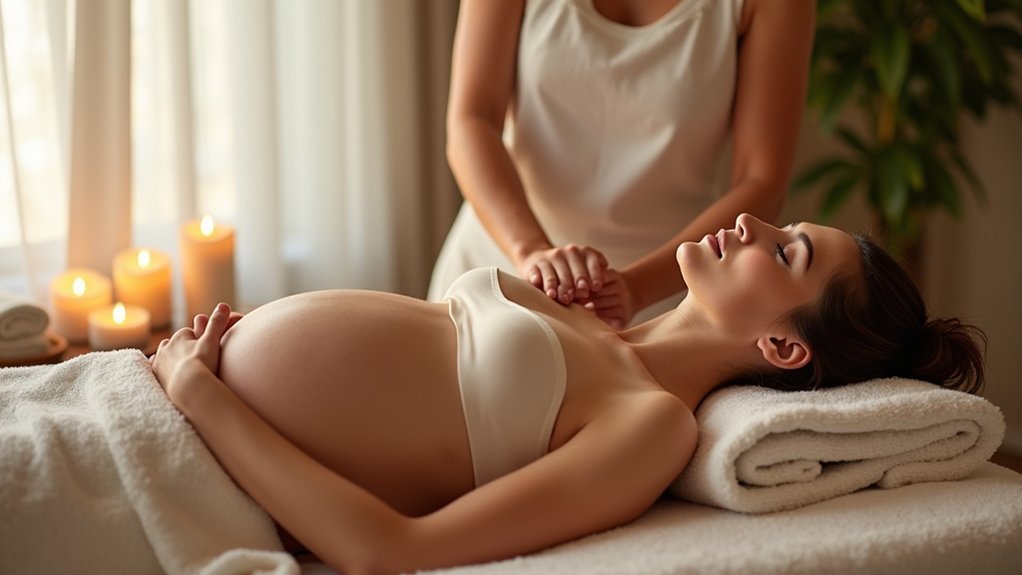
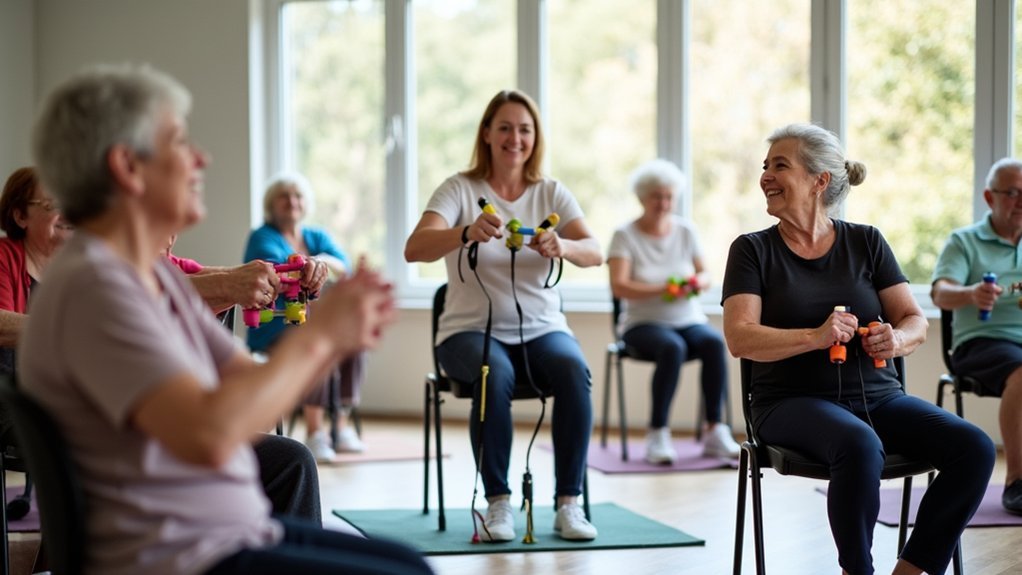
Leave a Reply